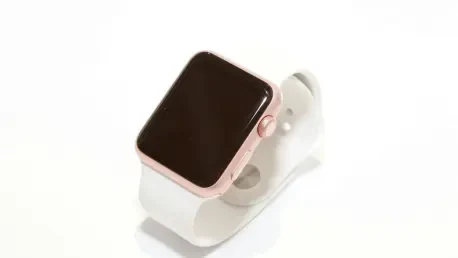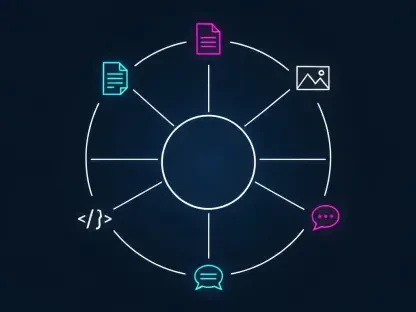In a landscape where smart technology continually pushes the boundaries of what’s conceivable, Apple has once again made waves with the announcement of watchOS 26. This update, launched at the highly anticipated Worldwide Developers Conference (WWDC), unveils a slew of advanced features harnessing artificial intelligence to enrich the user experience on wearables. Focusing on seamless integration into daily life, these enhancements echo Apple’s longstanding commitment to marrying technology with intuitive design. Users of Apple Watch Series 6 and later, 2nd Gen SE models, and both variations of the Apple Watch Ultra are set to benefit. Nevertheless, to unlock the full potential offered by watchOS 26’s sophisticated AI applications, an iPhone 11 or newer, ideally the iPhone 15 Pro or iPhone 16, running iOS 26, is recommended.
AI-Powered Exercise Motivation
Workout Buddy and Its Revolutionary Impact
A highlight of watchOS 26 is the Workout Buddy, an artificial intelligence-driven personal trainer nestled within the Workouts app. Designed to inject enthusiasm into workouts, this feature learns from past exercise data to provide dynamic feedback tailored to individual fitness goals. This level of personalization is not novel but a sophisticated expansion of Apple’s prior developments in AI, with Workout Buddy building on concepts first introduced in watchOS 11. During high-profile demonstrations at the WWDC event, its practical applications became apparent as users received immediate feedback on vital metrics like mile times, overall distance, and current pace. Such real-time assistance promises to boost user motivation, offering a genuinely valuable companion during physical activities. This inclusion is illustrative of Apple’s broader strategy to leverage AI, not just for convenience but for enhancing the very experience of physical engagement.
Integration with Advanced Technology
The technological synergy displayed with the Workout Buddy is emblematic of Apple’s intent to integrate cutting-edge advancements into everyday life. However, to fully exploit this feature, pairing the device with newer iPhone models is crucial. Devices like the iPhone 15 Pro provide optimal functionality, primarily because they support more intricate AI processing and seamless connective capabilities with the latest earbuds. Such requirements highlight Apple’s evolving architectural approach, seeking more comprehensive integration across its ecosystem. This bid to entwine AI deeply within its design philosophy points to a future where digital aids are less a novelty and more an essential aspect of the wearable experience. Through closer examination of real-world applications, the watchOS 26 update appears not only to augment physical engagement but blurs the lines between human intuition and machine learning—an ambitious enterprise pursued with fervor by Apple.
Gesture Control: Elevating User Interaction
The Innovative Wrist Flick Gesture
The innovation injected into watchOS 26 is exemplified by the introduction of the wrist flick gesture. This intuitive form of communication enables users to control their smartwatch with unprecedented ease. Functions such as dismissing calls, silencing alarms, or returning to the main watch face can now be managed simply by flicking one’s wrist, minimizing the need for both hands in operation. When coupled with the pre-existing double-tap gesture, watchOS 26 offers an almost conversational way to interact with the device, ensuring that technology becomes less a barrier and more a facilitator in daily life. This feature stands as a testament to Apple’s dedication to crafting hardware and software that is both elegantly simple and effortlessly accessible, reflecting a shift towards an unobtrusive technological experience where the device operation is seamlessly embedded in natural human behavior.
Seamless Integration with Daily Life
Emphasizing a seamless integration into one’s lifestyle, the wrist flick gesture serves as a conduit linking technology more intimately with its user. As individuals increasingly rely on connected devices during various activities, such innovations underscore the importance of non-intrusive technology that fits smoothly into complex routines. Apple’s knack for marrying form and function is evident in these updates; the wrist flick gesture facilitates routine tasks while preserving the aesthetic appeal and sophisticated design expected from an Apple product. By engineering smartwatches to accommodate such instinctive interactions, Apple has considerably narrowed the gap between user interface and user experience, steering technology towards a significant pivot where devices react skillfully to gestures with almost preemptive insight. This capability resonates with Apple’s philosophy of fostering a more integrated lifestyle with technology that responds fluidly to human gestures and actions.
Visual and Functional Design Innovations
The Captivating Liquid Glass Design
In a bid to reinvigorate its visual appeal, watchOS 26 makes a notable shift with its Liquid Glass design language, a part of a wider design overhaul seen across modern Apple products. This sophisticated design methodology introduces glass effects that elevate the aesthetic allure of the watch interface. App control, notifications, and other elements now possess a more tangible and vivid appearance, furthering Apple’s commitment to design excellence. Personalized watch faces from earlier versions are augmented with Liquid Glass, enabling users to employ customized backgrounds like photos or genmoji. These adjustments facilitate a personalization that is striking yet functional, offering seamless spatial reallocation for display elements like time indicators, optimizing utility and style in tandem. Apple’s design ethos shines through as it continues to capture aesthetics that resonate deeply with user sensibility.
Enhancements in User Experience
watchOS 26’s emphasis on visual refinement does not come at the cost of functionality. Instead, the alignment of aesthetic and usability principles captivates users while still ensuring technical enhancements under the aegis of Apple design. This balance is exemplified by the subtle, nuanced changes made to optimize display elements that integrate personal expression with technological superiority. Such enhancements reveal Apple’s attention to the evolving desires of consumers who crave both innovation and familiarity in their devices. Apple extends this philosophy by ensuring that each update not only delivers visually enchanting experiences but also bolsters utility with added visual depth and clarity. The Liquid Glass design is a cornerstone of this transformation, strategically placing Apple at the zenith of design and engineering prowess in the technological arena.
Enhanced Functionality and Utility
Adaptive Notification Management
With an acute understanding of user needs, watchOS 26 introduces contextual notification volume—a subtle feature with substantial practical implications. By automatically adjusting the notification chimes in quieter environments, Apple’s smartwatch maintains an air of discretion without sacrificing attentiveness. This innovation aligns with Apple’s long-standing tactics in sound management technology, such as noise cancellation, to ensure each device continues enhancing a distinguished ambient user experience. These adaptive modifications echo an industry demand for devices to act intelligently, responding effortlessly to context and environmental stimuli. Apple’s foray into contextual sound control reiterates its resolve to lead not only in terms of groundbreaking features but also in refining user experience through consistent and astute innovation.
Predictive Technology in Smart Stack
Additionally, Apple’s drive for innovation becomes evident in the revisions made to Smart Stack with watchOS 26. This feature now leverages advanced contextual data through Apple Intelligence to update widgets in response to users’ daily habits. By scheduling relevant widgets based on the user’s environment, it showcases technological prowess predicting needs before manual intervention is required. Walking into a gym may prompt the appearance of workout app widgets, offering convenience that transcends the ordinary gadget interaction. This adaptation exemplifies a movement towards technology that is increasingly anticipatory in nature—a hallmark of next-generation wearable solutions. It represents a shift to predicting demand, offering information before it is consciously required, thereby empowering users with technological acumen that responds holistically to lifestyle and personal routines.
Expanding Musical and Messaging Interfaces
Music Curation and Personalization
Music, a core aspect of user engagement, has not been overlooked in this latest update. watchOS 26 incorporates advancements that heighten the synergy between the Workout app and user music preferences. This intelligent design acknowledges external factors affecting workouts—music plays an integral part in exercising enthusiasm. Users can now leverage customizable buttons within the app, facilitating swift adjustments that affect both the exercise metrics and accompanying musical ambiance. Innovating along these lines reaffirms Apple’s commitment to providing harmonious and cohesive experiences. This correlation draws parallels to Apple’s ongoing objective to present tailored, mood-oriented playlists that align with the rhythm and intensity of physical activities, thereby fostering immersive exercise scenarios that resonate profoundly with its user base.
Messaging within watchOS 26
Parallel to enhancements in music, watchOS 26 rejuvenates messaging functionalities with groundbreaking strides in translation capabilities. Live Translation is poised to revolutionize text message communications by permitting in-app real-time translations. Diminishing the dependency on third-party translation applications, this update reflects a broader organizational initiative toward unifying intercommunication technologies. Coupled with other iOS 26 augments such as Check In notifications and Apple Cash use within Messages, these updates project an overarching perspective focused on creating a holistic ecosystem where communication and transactions are intuitive. The seamless integration of these elements paints a promising future where users benefit from centralized applications that deliver robust and versatile features operating in tandem.
New Features in Notes and Live Listen
Quick Note Taking on the Wrist
Closely aligned with ongoing trends, Apple introduces the Notes app to its wearable lineup, heralding quick note-taking without needing alternative devices. This innovation is apt for users who value prompt access to information, further extending the convenience of mobile note-recording onto the wrist. Seamlessly providing features typical of larger counterparts, the smartwatch variant retains the core value of expedience, appealing sharply to consumers who effortlessly oscillate between digital formats. Apple’s eye for innovation taps into this growing preference for swiftly accessible information, using the Apple Watch as more than just a mobile phone extension but an autonomous digital assistant.
Accessibility and Real-Time Features
Complementing the drive for enhanced everyday utility is Live Listen, which comes to the fore by offering real-time captions. This functionality has precedence in accessibility technologies and highlights Apple’s eagerness to cater to inclusivity across varying user preferences and needs. Additionally, improvements in call management through features like Hold Assistant and Call Screening underscore Apple’s resolve to give users comprehensive control from the comfort of their wrist. These strides capture a prevailing desire for cohesive, user-centric technology offering expansive control across communication mediums. As the adoption of inclusive technology grows, the Apple Watch solidifies its role not merely as a convenience tool but as a central pillar in establishing broader accessibility options within the realm of smart wearables.
A Conclusion on watchOS 26
In tune with current tech advancements, Apple has extended its Notes app to the Apple Watch. This move enables users to jot down quick notes without relying on alternative devices like smartphones or tablets. This feature particularly caters to individuals who prioritize immediate access to information, enhancing the practical convenience of wrist-based note-taking. Despite its compact size, the Notes app on the smartwatch incorporates several elements familiar to its larger device counterparts, maintaining a high degree of efficiency and speed. This development is timely, given the increasing demand for swift access to digital content across various platforms. It highlights Apple’s commitment to innovation, positioning the Apple Watch not merely as an accessory to the iPhone but as an independent digital entity. With this new capability, the Apple Watch serves as a versatile tool, satisfying consumer preferences for accessibility and immediate information retrieval, effectively functioning as a standalone digital assistant on the user’s wrist.









